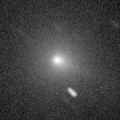
|
Now it is bright as 8.3 mag (Sept. 25, Juan Jose Gonzalez). It is expected to brighten up to 7.5 mag in October. Recently, it is a bit fainter than this ephemeris. In the Northern Hemisphere, it stays observable in excellent condition for a long time. In the Southern Hemisphere, it is getting lower gradually, and it will be unobservable for a long time after October.
Date(TT) R.A. (2000) Decl. Delta r Elong. m1 Best Time(A, h)
Sept.30 4 23.32 34 1.3 0.773 1.513 116 7.7 3:49 (180, 21)
Oct. 7 4 32.31 41 51.6 0.739 1.503 118 7.6 3:30 (180, 13)
|
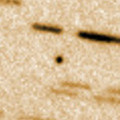
|
Now it is 17.5 mag (Aug. 6, Jean-Francois Soulier). It will pass the perihelion on Oct. 27. In the Southern Hemisphere, it stays observable while the comet will be brightening, until early October when the comet will brighten up to 9 mag. In the Northern Hemisphere, it is not observable at all in this apparition.
Date(TT) R.A. (2000) Decl. Delta r Elong. m1 Best Time(A, h)
Sept.30 13 44.33 -50 50.7 1.020 0.870 50 12.0 19:27 ( 44, 24)
Oct. 7 13 41.24 -45 46.5 0.981 0.708 41 10.9 19:34 ( 45, 16)
|

|
It brightened up to 7.1 mag from May to June (June 21, Juan Jose Gonzalez). Now it is fading. It has already faded down to 10.9 mag (Sept. 22, Chris Wyatt). In the Southern Hemisphere, it is observable in good condition after this. It will never be observable again in the Northern Hemisphere.
Date(TT) R.A. (2000) Decl. Delta r Elong. m1 Best Time(A, h)
Sept.30 16 19.69 -52 9.3 2.321 2.177 69 10.9 19:27 ( 48, 47)
Oct. 7 16 38.87 -53 26.1 2.435 2.235 66 11.1 19:34 ( 47, 45)
|
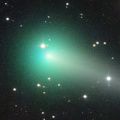
|
It brightened up to 6.2 mag in April (Apr. 7, Juan Jose Gonzalez). Now it is fading rapidly. It has already faded down to 12.6 mag (Sept. 16, Carlos Labordena). It stays observable for a long time after this.
Date(TT) R.A. (2000) Decl. Delta r Elong. m1 Best Time(A, h)
Sept.30 3 52.78 22 31.2 1.666 2.395 125 11.4 3:19 (180, 32)
Oct. 7 3 47.54 22 2.9 1.676 2.478 134 11.6 2:46 (180, 33)
|
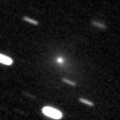
|
Now it is 13.9 mag (Sept. 27, Chris Wyatt). It will stay bright as 10 mag for a long time from winter to next spring. But actually, it is fainter than this ephemeris recently. In the Southern Hemisphere, it stays observable in good condition until next February. In the Northern Hemispehre, it stays observable for a long time after this until the comet fades out.
Date(TT) R.A. (2000) Decl. Delta r Elong. m1 Best Time(A, h)
Sept.30 5 35.98 -1 58.1 3.117 3.468 102 11.9 4:13 (202, 55)
Oct. 7 5 36.80 -1 34.3 2.978 3.423 108 11.7 4:02 (195, 56)
|
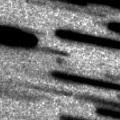
|
Now it is 15.8 mag (Sept. 2, Ken-ichi Kadota). It will brighten very rapidly, and brighten up to 10 mag from October to December. It is observable in good condition in the Northern Hemisphere. It locates very low for a long time in the Southern Hemisphere.
Date(TT) R.A. (2000) Decl. Delta r Elong. m1 Best Time(A, h)
Sept.30 8 59.78 19 39.6 1.653 1.357 55 13.1 4:13 (238, 9)
Oct. 7 9 28.15 18 30.1 1.601 1.318 55 12.4 4:02 (241, 8)
|
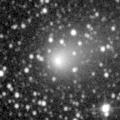
|
It brightened up to 10 mag from spring to summer. Now it is fading. It has already faded down to 12.2 mag (Sept. 22, Chris Wyatt). It is observable in excellent condition in the Southern Hemisphere. It locates low in the Northern Hemisphere.
Date(TT) R.A. (2000) Decl. Delta r Elong. m1 Best Time(A, h)
Sept.30 19 11.96 -34 48.2 1.367 1.805 98 12.4 19:27 ( 88, 80)
Oct. 7 19 29.05 -33 51.0 1.455 1.835 94 12.7 19:34 ( 90, 76)
|
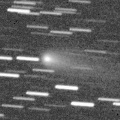
|
It brightened up to 12.2 mag in August (Aug. 21, Juan Jose Gonzalez). It will be fading after this. It has already faded down to 13.9 mag (Sept. 21, Chris Wyatt).
Date(TT) R.A. (2000) Decl. Delta r Elong. m1 Best Time(A, h)
Sept.30 7 29.18 10 57.2 1.476 1.551 74 12.5 4:13 (227, 30)
Oct. 7 7 41.60 10 38.9 1.467 1.601 78 12.7 4:02 (227, 31)
|

|
Outburst occured on Aug. 27. Now it is very bright as 11.9 mag (Sept. 27, Chris Wyatt).
Date(TT) R.A. (2000) Decl. Delta r Elong. m1 Best Time(A, h)
Sept.30 21 5.10 -14 47.2 5.152 5.817 127 13.3 20:28 (180, 70)
Oct. 7 21 4.32 -14 47.0 5.245 5.816 120 13.3 20:00 (180, 70)
|
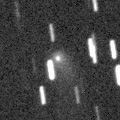
|
Now it is 14.6 mag (Sept. 25, Seiichi Yoshida). In the Northern Hemisphere, it will brighten up to 14 mag from summer to winter, and it will be observable in excellent condition. It is not observable at all after this in the Southern Hemisphere.
Date(TT) R.A. (2000) Decl. Delta r Elong. m1 Best Time(A, h)
Sept.30 21 29.39 70 49.4 2.773 3.202 106 13.8 20:49 (180,-16)
Oct. 7 21 0.61 70 19.1 2.788 3.205 105 13.8 19:53 (180,-15)
|
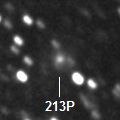
|
Now it is bright as 13.5 mag (Aug. 14, Chris Wyatt). It was expected to brighten up to 12 mag in summer. But actually, it is fainter than expected. It is observable in excellent condition in the Southern Hemisphere. It locates somewhat low in the Northern Hemisphere.
Date(TT) R.A. (2000) Decl. Delta r Elong. m1 Best Time(A, h)
Sept.30 19 23.66 -20 9.6 1.505 1.984 102 13.8 19:27 (147, 73)
Oct. 7 19 33.79 -19 13.1 1.576 1.986 98 13.9 19:34 (134, 69)
|
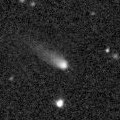
|
It brightened up to 12.3 mag in August (Aug. 16, Juan Jose Gonzalez). It will be fading after this. It has already faded down to 14.6 mag (Sept. 10, Thomas Lehmann).
Date(TT) R.A. (2000) Decl. Delta r Elong. m1 Best Time(A, h)
Sept.30 19 37.91 -9 52.3 2.269 2.741 107 14.0 19:27 (165, 64)
Oct. 7 19 27.50 -11 29.3 2.428 2.751 97 14.2 19:34 (141, 62)
|
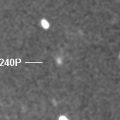
|
It brightened very rapidly from July to August. Now it is very bright as 14.1 mag (Sept. 27, Chris Wyatt). It is observable in excellent condition in the Southern Hemisphere. It stays low for a while in the Northern Hemisphere.
Date(TT) R.A. (2000) Decl. Delta r Elong. m1 Best Time(A, h)
Sept.30 0 18.67 -36 29.7 1.878 2.728 140 14.4 23:40 ( 0, 89)
Oct. 7 0 12.23 -36 27.9 1.879 2.699 137 14.3 23:06 ( 0, 89)
|
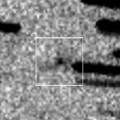
|
Now it is 18.5 mag (Aug. 13, Francois Kugel). It brightens rapidly, and brightens up to 11 mag from autumn to winter. It is observable in good condition in the Northern Hemisphere. It locates low in the Southern Hemisphere.
Date(TT) R.A. (2000) Decl. Delta r Elong. m1 Best Time(A, h)
Sept.30 8 22.08 18 47.1 1.628 1.481 63 15.3 4:13 (232, 16)
Oct. 7 8 46.50 18 3.4 1.572 1.455 64 14.3 4:02 (234, 15)
|
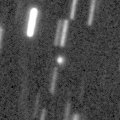
|
Now it is 13.7 mag (Sept. 22, Sandor Szabo). It is expected to brighten up to 11-12 mag from 2018 to 2019. In the Northern Hemisphere, it stays observable in good condition while the comet will be brightening gradually. In the Southern Hemisphere, it is not observable until 2018 October.
Date(TT) R.A. (2000) Decl. Delta r Elong. m1 Best Time(A, h)
Sept.30 14 54.56 49 38.4 4.351 3.971 61 14.7 19:27 (138,-19)
Oct. 7 14 56.35 48 53.5 4.310 3.922 60 14.6 19:34 (135,-23)
|
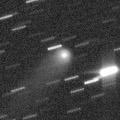
|
Now it is 14.2 mag (Sept. 22, Sandor Szabo). It will be observable at 14 mag for a long time from 2017 to 2018. In the Southern Hemisphere, it will be unobservable in early October. It will be extremely low from November to December in the Northern Hemisphere.
Date(TT) R.A. (2000) Decl. Delta r Elong. m1 Best Time(A, h)
Sept.30 16 6.51 19 52.7 4.360 3.937 58 14.7 19:27 (124, 11)
Oct. 7 16 6.52 19 32.3 4.416 3.917 54 14.7 19:34 (119, 6)
|
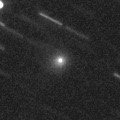
|
Now it is 14.5 mag (Sept. 22, Sandor Szabo). It is expected to brighten up to 9 mag in summer in 2018. In the Northern Hemisphere, it stays observable until 2018 summer while the comet will be brightening. In the Southern Hemisphere, it is hardly observable in 2017, but it will be observable in good condition in 2018.
Date(TT) R.A. (2000) Decl. Delta r Elong. m1 Best Time(A, h)
Sept.30 17 6.37 29 24.6 4.196 4.043 74 14.8 19:27 (141, 13)
Oct. 7 17 9.02 27 18.0 4.209 3.986 70 14.7 19:34 (134, 11)
|

|
Now it is 13-13.5 mag (Aug. 18, Gabor Santa). It will be unobservable in late October in the Northerm Hemisphere, or in late November in the Southern Hemisphere.
Date(TT) R.A. (2000) Decl. Delta r Elong. m1 Best Time(A, h)
Sept.30 16 44.32 -26 31.3 3.164 2.911 66 14.9 19:27 ( 87, 47)
Oct. 7 16 54.46 -26 53.0 3.246 2.910 61 14.9 19:34 ( 84, 42)
|
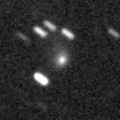
|
Now it is 15.3 mag (Aug. 22, Kunihiro Shima). It stays observable at 16 mag for a long time from 2017 to 2018.
Date(TT) R.A. (2000) Decl. Delta r Elong. m1 Best Time(A, h)
Sept.30 1 46.90 22 16.6 3.406 4.317 152 15.0 1:13 (180, 33)
Oct. 7 1 36.20 20 29.9 3.350 4.308 161 15.0 0:35 (180, 34)
|
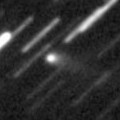
|
Now it is 15.7 mag (Sept. 13, Martin Masek). It will brighten up to 14.5 mag in winter. In the Southern Hemisphere, it stays observable in excellent condition until spring in 2018. In the Northern Hemisphere, it stays unobservable until 2018.
Date(TT) R.A. (2000) Decl. Delta r Elong. m1 Best Time(A, h)
Sept.30 3 18.55 -80 59.4 2.010 2.305 93 15.1 2:43 ( 0, 44)
Oct. 7 3 0.77 -80 52.5 1.993 2.265 92 15.0 1:58 ( 0, 44)
|

|
Now it is 15.4 mag (Sept. 2, Ken-ichi Kadota). It brightened rapidly. It is observable at 15 mag in autumn in good condition in the Northern Hemisphere. It locates low in the Southern Hemisphere.
Date(TT) R.A. (2000) Decl. Delta r Elong. m1 Best Time(A, h)
Sept.30 5 15.60 29 21.6 1.383 1.923 106 15.5 4:13 (187, 25)
Oct. 7 5 24.32 30 35.6 1.331 1.932 111 15.4 4:02 (185, 24)
|

|
Now it is 15.4 mag (Aug. 19, Gabor Santa). It stays observable at 16 mag unil the end of 2017.
Date(TT) R.A. (2000) Decl. Delta r Elong. m1 Best Time(A, h)
Sept.30 3 38.73 1 40.4 5.293 6.004 131 15.4 3:04 (180, 53)
Oct. 7 3 37.64 1 14.3 5.252 6.032 138 15.4 2:36 (180, 54)
|
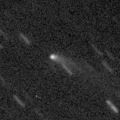
|
Now it is 16.4 mag (Aug. 26, Toshiyuki Takahashi). It was observed at 17 mag in 2016. In 2017, it will be observable at 15.5 mag in good condition from summer to autumn. It is fainter than this ephemeris recently.
Date(TT) R.A. (2000) Decl. Delta r Elong. m1 Best Time(A, h)
Sept.30 1 29.99 17 51.8 1.937 2.890 157 15.6 0:56 (180, 37)
Oct. 7 1 24.63 17 58.5 1.923 2.899 164 15.6 0:23 (180, 37)
|
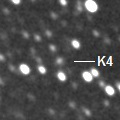
|
Now it is 15.5 mag (Aug. 9, Yuji Ohshima). It stays 16 mag for a long time until summer in 2018. In the Southern Hemisphere, it stays observable in excellent condition until autumn. It locates low in the Northern Hemisphere.
Date(TT) R.A. (2000) Decl. Delta r Elong. m1 Best Time(A, h)
Sept.30 17 33.72 -27 31.5 2.875 2.831 77 15.8 19:27 ( 93, 57)
Oct. 7 17 43.76 -26 57.8 2.936 2.807 72 15.8 19:34 ( 90, 52)
|
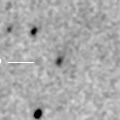
|
First return of a new periodic comet discovered in 2000. Now it is 16.3 mag (Aug. 26, Toshiyuki Takahashi). It will brighten rapidly, and it was expected to be observable at 15.5 mag in good condition from July to September. But actually, it is fainter than this ephemeris.
Date(TT) R.A. (2000) Decl. Delta r Elong. m1 Best Time(A, h)
Sept.30 0 53.95 -6 54.4 1.686 2.673 167 16.1 0:20 (180, 62)
Oct. 7 0 47.87 -6 20.8 1.706 2.692 168 16.2 23:42 (180, 61)
|

|
Appearing in the morning sky. It stays 16-17 mag for a long time from 2016 to 2019. It stays near by the equator.
Date(TT) R.A. (2000) Decl. Delta r Elong. m1 Best Time(A, h)
Sept.30 10 11.66 5 0.5 10.369 9.557 34 16.2 4:13 (261, 4)
Oct. 7 10 14.79 4 49.2 10.300 9.558 40 16.2 4:02 (259, 7)
|

|
Appearing in the morning sky. It will be observable at 15 mag in good condition from winter to spring.
Date(TT) R.A. (2000) Decl. Delta r Elong. m1 Best Time(A, h)
Sept.30 10 31.43 14 42.8 4.358 3.561 33 16.2 4:13 (256, -5)
Oct. 7 10 39.97 13 59.9 4.296 3.558 37 16.2 4:02 (255, -3)
|
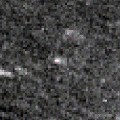
|
Now it is 16.8 mag (Sept. 13, Martin Masek). Return of a new periodic comet which brightened up to 13 mag in 2004. It will be observable in excellent condition in autumn. It was expected to brighten up to 14 mag, if the comet is as bright as when it was discovered. But actually, it is much fainter than expected.
Date(TT) R.A. (2000) Decl. Delta r Elong. m1 Best Time(A, h)
Sept.30 2 46.49 3 29.0 0.803 1.720 144 16.6 2:12 (180, 51)
Oct. 7 2 45.75 4 26.7 0.772 1.717 151 16.5 1:44 (180, 51)
|
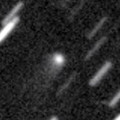
|
It stays 16 mag for a long time from 2017 to 2018. It is observable in excellent condition in the Northern Hemisphere. It locates very low in the Southern Hemisphere.
Date(TT) R.A. (2000) Decl. Delta r Elong. m1 Best Time(A, h)
Sept.30 9 12.06 19 33.0 5.897 5.343 52 16.6 4:13 (240, 7)
Oct. 7 9 14.11 20 6.8 5.787 5.340 58 16.6 4:02 (238, 9)
|

|
Now it is 16.0 mag (Aug. 22, Kunihiro Shima). It stays 16 mag from 2016 to 2017. In the Northern Hemisphere, it stays observable in good condition for a long time. In the Southern Hemisphere, it will never be observable again.
Date(TT) R.A. (2000) Decl. Delta r Elong. m1 Best Time(A, h)
Sept.30 17 54.30 62 9.5 6.503 6.559 88 16.7 19:27 (165,-11)
Oct. 7 17 58.65 61 37.7 6.521 6.574 88 16.7 19:34 (162,-12)
|
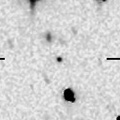
|
It will be observable at 16.5 mag in good condition in winter.
Date(TT) R.A. (2000) Decl. Delta r Elong. m1 Best Time(A, h)
Sept.30 8 44.52 10 38.5 3.080 2.660 56 16.9 4:13 (243, 18)
Oct. 7 8 54.77 9 1.0 3.015 2.668 60 16.9 4:02 (243, 20)
|
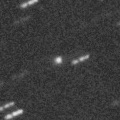
|
Now it is 17.1 mag (Sept. 2, Toshiyuki Takahashi). It is expected to brighten up to 13-14 mag from 2018 to 2019. In the Northern Hemisphere, it stays observable in good condition for a long time. In the Southern Hemisphere, it is not observable until summer in 2018.
Date(TT) R.A. (2000) Decl. Delta r Elong. m1 Best Time(A, h)
Sept.30 18 29.13 58 49.7 5.240 5.384 92 16.9 19:27 (168, -6)
Oct. 7 18 26.85 56 59.3 5.220 5.337 91 16.9 19:34 (163, -6)
|

|
Now it is 17.9 mag (June 2, MASTER-OAFA Observatory). It will brighten up to 14 mag from autumn to winter in 2018, and it will be observable in excellent condition in the Northern Hemisphere. In 2017, it is observable at 17 mag in excellent condition in the Southern Hemisphere.
Date(TT) R.A. (2000) Decl. Delta r Elong. m1 Best Time(A, h)
Sept.30 23 28.99 -45 51.3 3.198 3.916 129 17.0 22:51 ( 0, 79)
Oct. 7 23 21.26 -45 16.9 3.206 3.874 125 17.0 22:16 ( 0, 80)
|
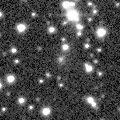
|
It will pass the perihelion in 2019. However, it has not been brightening since the discovery in 2010. It is observable in good conditioin in the Northern Hemisphere. It is not observable for a long time in the Southern Hemisphere.
Date(TT) R.A. (2000) Decl. Delta r Elong. m1 Best Time(A, h)
Sept.30 6 52.70 69 4.2 8.916 8.972 90 17.0 4:13 (191,-17)
Oct. 7 6 56.78 69 45.7 8.825 8.959 94 17.0 4:02 (190,-17)
|

|
Now it is 18.0 mag (Aug. 22, Kunihiro Shima). In the Northern Hemisphere, it will be observable at 17 mag in excellent condition from autumn to winter. It locates low in the Southern Hemisphere.
Date(TT) R.A. (2000) Decl. Delta r Elong. m1 Best Time(A, h)
Sept.30 5 35.37 32 4.2 2.695 3.063 101 17.1 4:13 (191, 22)
Oct. 7 5 39.55 32 34.9 2.618 3.075 107 17.0 4:02 (188, 22)
|
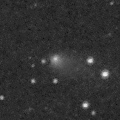
|
Hilda-type minor planet, but the cometary activity was detected on July 3. Now it is bright as 16.2 mag (Aug. 22, Kunihiro Shima).
Date(TT) R.A. (2000) Decl. Delta r Elong. m1 Best Time(A, h)
Sept.30 20 50.79 -3 12.8 2.804 3.490 126 17.2 20:14 (180, 58)
Oct. 7 20 51.67 -3 50.7 2.903 3.507 119 17.3 19:47 (180, 59)
|
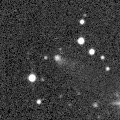
|
It was observed at 17 mag in 2016. It stays 17 mag also in 2017. It is observable in good condition in the Northern Hemisphere. It locates very low in the Southern Hemisphere.
Date(TT) R.A. (2000) Decl. Delta r Elong. m1 Best Time(A, h)
Sept.30 7 3.55 33 22.4 2.917 2.974 83 17.3 4:13 (209, 15)
Oct. 7 7 10.50 33 35.0 2.845 2.996 88 17.3 4:02 (207, 15)
|
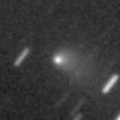
|
Now it is 15.8 mag (Sept. 2, Ken-ichi Kadota). It is observable in excellent condition in the Southern Hemisphere. It will be getting higher gradually in the morning sky also in the Northern Hemisphere. It will fade out rapidly after this.
Date(TT) R.A. (2000) Decl. Delta r Elong. m1 Best Time(A, h)
Sept.30 21 5.64 -15 58.5 1.893 2.624 127 17.3 20:29 (180, 71)
Oct. 7 21 6.68 -14 19.9 1.990 2.649 121 17.5 20:02 (180, 69)
|
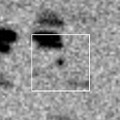
|
It will approach to Earth down to 0.07 a.u. in mid December, and it will brighten up to 10 mag. In the Northern Hemisphere, it stays observable in excellent condition until mid December. In the Southern Hemisphere, it stays low.
Date(TT) R.A. (2000) Decl. Delta r Elong. m1 Best Time(A, h)
Sept.30 6 28.98 33 23.8 1.595 1.892 90 18.1 4:13 (202, 18)
Oct. 7 6 37.35 33 33.5 1.446 1.837 95 17.8 4:02 (200, 18)
|
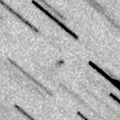
|
Now it is 19.3 mag (Aug. 23, Michael Jager). It is observable in good condition. But actually, it is much fainter than this ephemeris.
Date(TT) R.A. (2000) Decl. Delta r Elong. m1 Best Time(A, h)
Sept.30 19 31.31 15 52.8 0.697 1.375 106 17.8 19:27 (170, 38)
Oct. 7 19 52.72 16 23.3 0.756 1.414 106 18.1 19:34 (167, 37)
|

|
Peculiar asteroid moving along a comet-like orbit. It is observable at 18 mag in good condition from August to September. It locates somewhat low in the Southern Hemisphere.
Date(TT) R.A. (2000) Decl. Delta r Elong. m1 Best Time(A, h)
Sept.30 22 17.42 17 9.0 2.899 3.767 145 17.9 21:40 (180, 38)
Oct. 7 22 15.39 16 46.1 2.945 3.769 140 18.0 21:10 (180, 38)
|

|
It brightened up to 11 mag from spring to summer in 2016. Now it is 17.4 mag (July 14, Ken-ichi Kadota). It stays observable for a long time after this, but it will be fainter than 18 mag in October.
Date(TT) R.A. (2000) Decl. Delta r Elong. m1 Best Time(A, h)
Sept.30 19 32.72 -21 7.9 3.315 3.699 104 17.9 19:27 (152, 75)
Oct. 7 19 35.28 -21 6.1 3.451 3.731 98 18.0 19:34 (131, 70)
|
|
![]()
 C/2011 KP36 ( Spacewatch )
C/2011 KP36 ( Spacewatch ) 47P/Ashbrook-Jackson
47P/Ashbrook-Jackson C/2017 K4 ( ATLAS )
C/2017 K4 ( ATLAS ) 352P/2017 L1 ( Skiff )
352P/2017 L1 ( Skiff ) C/2014 B1 ( Schwartz )
C/2014 B1 ( Schwartz ) 74P/Smirnova-Chernykh
74P/Smirnova-Chernykh 355P/2017 M2 ( LINEAR-NEAT )
355P/2017 M2 ( LINEAR-NEAT ) C/2016 A1 ( PanSTARRS )
C/2016 A1 ( PanSTARRS ) C/2014 OE4 ( PanSTARRS )
C/2014 OE4 ( PanSTARRS ) C/2016 T3 ( PanSTARRS )
C/2016 T3 ( PanSTARRS ) C/2017 M4 ( ATLAS )
C/2017 M4 ( ATLAS ) (944) Hidalgo
(944) Hidalgo C/2010 U3 ( Boattini )
C/2010 U3 ( Boattini ) 90P/Gehrels 1
90P/Gehrels 1 (457175) 2008 GO98
(457175) 2008 GO98 188P/LINEAR-Mueller
188P/LINEAR-Mueller C/2017 D2 ( Barros )
C/2017 D2 ( Barros ) (3200) Phaethon
(3200) Phaethon 189P/NEAT
189P/NEAT 2016 ND21
2016 ND21 81P/Wild 2
81P/Wild 2![]()





































